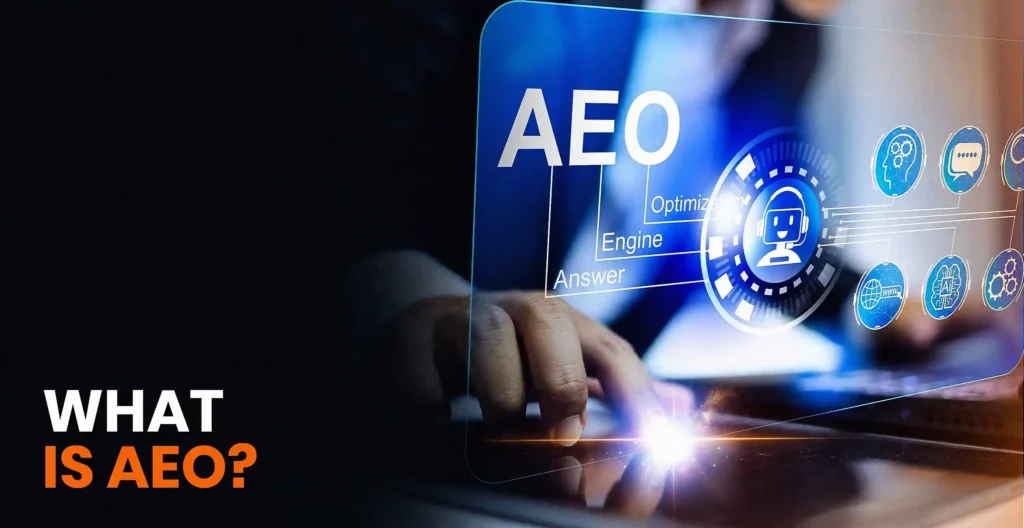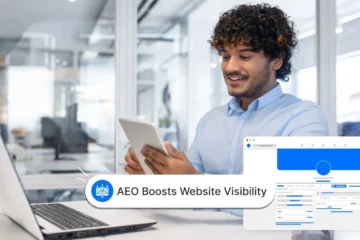What Are Leading AEO Agencies and Why Is Human Search Intent Important for Them?
A leading AEO agency specializes in Answer Engine Optimization, focusing on positioning content to appear in AI-powered search results, featured snippets, and voice search responses. These agencies bridge the gap between traditional SEO and the evolving landscape where AI systems interpret and deliver search results.
Human search intent represents the underlying purpose driving every query—what users truly want to accomplish when they type or speak their questions. Understanding this intent separates successful content from irrelevant noise.
Search intent typically falls into four categories:
- Informational: Users seeking knowledge or answers
- Navigational: Users looking for a specific website or page
- Transactional: Users ready to purchase or take action
- Commercial investigation: Users comparing options before deciding
Aligning AI-generated content with human search intent directly impacts SEO performance. Google’s algorithms prioritize content that genuinely satisfies the user’s question rather than simply matching keywords. When a leading AEO agency successfully matches intent with AI outputs, the results include:
- Higher search rankings across traditional and AI-powered platforms
- Improved click-through rates and user engagement
- Increased conversions and reduced bounce rates
- Enhanced brand authority and trustworthiness
This alignment requires deep understanding of user goals combined with strategic AI implementation—a balance that defines modern AEO success.
How Do Leading AEO Agencies Use AI to Understand Search Intent?
Can AI really understand what users want from their searches? Leading agencies use AI-generated content strategically by treating artificial intelligence as a precise tool rather than just a text generator. The AI capabilities they utilize are focused on creating content that directly meets specific user needs on a large scale.
1. Intent-driven keyword research
The foundation of this approach is based on intent-driven keyword research. Agencies provide AI systems with detailed information about target queries, such as:
- Primary keywords and their variations
- User questions taken from “People Also Ask” sections
- Patterns in search volume that indicate the strength of intent
- Analysis of competitor content to identify gaps
2. Detailed prompt engineering
Generic outputs from AI are transformed into intent-specific content through detailed prompt engineering. Agencies create prompts that clearly state the exact user goal—whether someone needs a quick definition, step-by-step instructions, or product comparisons. These prompts also include contextual information such as the expertise level of the target audience, the desired depth of content, and any specific formatting requirements.
3. Different search intents require different AI methods
Different types of search intents require different approaches when using AI:
- Informational queries benefit from models that are optimised for providing comprehensive explanations and structured data.
- Transactional content requires AI that has been trained on language focused on conversions and persuasive frameworks.
- Commercial investigation queries need models capable of making balanced comparisons and analysing features.
4. Including contextual data to enhance understanding
The process of including contextual data ensures that AI understands not only what it should write but also why users are searching for certain information. Agencies directly provide background information, industry-specific terms, and brand guidelines within the prompts given to the AI models. This method aligns with the principle of providing context to enhance understanding which is crucial in ensuring the generated content meets user expectations effectively.

Why Is Human Oversight Essential in the Process?
Can AI alone deliver content that ranks and converts? No—human review remains critical because generic AI outputs frequently lack the authority and engagement signals that Google prioritises.
AI models generate text based on patterns in training data, not real-world experience or expertise. This creates several problems:
- Shallow analysis that misses nuanced user needs
- Factual errors or outdated information presented as current
- Generic phrasing that fails to establish brand differentiation
- Missing E-A-T signals (Experience, Expertise, Authoritativeness, Trustworthiness)
Content accuracy suffers when AI hallucinates facts or misinterprets source material. A 2024 study found that 46% of AI-generated content contained at least one factual inaccuracy requiring correction.
Human editors verify claims against authoritative sources, add first-hand insights, and inject brand voice consistency that AI cannot replicate. They identify where AI has misunderstood search intent—perhaps generating a product comparison when users wanted installation instructions.
Trustworthiness emerges through human touches: author credentials, case study details, specific examples, and transparent sourcing. These elements signal to both users and search algorithms that content deserves ranking consideration.
The editing process transforms AI drafts from adequate to exceptional by adding depth, correcting tone, and ensuring every sentence serves the user’s underlying goal. You may like to visit https://www2.education.vic.gov.au/pal/generative-artificial-intelligence/guidance/appropriate-use-of-generative-ai-tools to get more about appropriate use of generative AI tools.
How Do Agencies Optimize Content for Different Search Intents?
Does matching content formats to user goals improve search performance? Yes—agencies that tailor content formats to specific intent types see higher engagement and rankings because they deliver exactly what searchers expect.
Each intent category demands distinct structural approaches:
- Informational queries require comprehensive guides with clear headings, step-by-step instructions, and explanatory depth. Users seeking knowledge want thorough answers, not sales pitches. Agencies structure these pieces with FAQ sections, visual aids, and detailed explanations that establish authority.
- Navigational intent needs streamlined landing pages with prominent branding, clear site architecture, and direct pathways to desired destinations. These pages prioritize speed and clarity over extensive content.
- Commercial investigation queries benefit from comparison tables, product roundups, and feature-by-feature analyses. Agencies create content that helps researchers evaluate options without pushing immediate purchases. Including pros/cons lists, pricing breakdowns, and expert assessments addresses the evaluation mindset.
- Transactional intent, as defined in this guide on the types of searches, demands conversion-focused formats: prominent calls-to-action, simplified checkout processes, trust signals like reviews and guarantees, and minimal friction between landing and purchasing. Product pages need specifications, availability, and clear pricing.
A leading AEO agency’s approach involves analysing top-ranking competitors for each intent type, identifying common structural patterns, then instructing AI to replicate successful formats whilst maintaining unique value propositions. This systematic matching of format to user goals ensures content satisfies both algorithmic preferences and human expectations. Check out more about Top 5 Benefits of Working With a Certified Umbraco Agency in Australia.
How Can Agencies Measure the Success of Aligning Human Intent With AI Outputs?
SEO performance analysis begins with tracking ranking positions for target keywords across different intent categories. Leading agencies monitor whether content moves into featured snippets, “People Also Ask” boxes, or top-three positions—indicators that Google recognises strong intent alignment.
Engagement metrics reveal how users interact with AI-generated content once they arrive. Key signals include:
- Dwell time: How long visitors stay on the page before returning to search results
- Bounce rate: Percentage of users leaving immediately without interaction
- Pages per session: Whether content encourages further site exploration
- Click-through rate (CTR): How compelling titles and meta descriptions are in search results
Agencies compare these metrics against baseline performance from previous content to identify improvements. A 30% increase in average session duration typically signals better intent satisfaction.
Conversion tracking measures whether content drives desired actions—newsletter signups for informational content, product page visits for commercial investigation queries, or completed purchases for transactional intent. Google Analytics 4 and Search Console provide granular data showing which queries lead to conversions.
Sophisticated agencies implement A/B testing between human-edited AI content and purely automated outputs, measuring which version achieves better rankings and user satisfaction. This data-driven approach identifies which AI-human collaboration techniques produce optimal results for specific intent types.

Why Should Agencies Combine Human Expertise With AI for Search Intent Alignment?
A hybrid approach delivers superior results because AI excels at scale whilst humans ensure accuracy, authority, and brand alignment. This combination transforms raw AI output into quality content production that satisfies both search algorithms and real user needs.
Leading AEO Agency How to Align Human Search Intent With AI-Generated Results strategies prove most effective when:
- AI handles research, structure, and initial drafts
- Human experts refine messaging, verify facts, and inject experience
- Continuous feedback loops improve both AI prompts and editorial standards
Ready to future-proof your SEO strategy? Adopt this proven model to outrank competitors whilst maintaining the authenticity and trustworthiness that Google rewards. Start integrating human oversight into your AI workflows today.
FAQs About Leading AEO Agency
A leading AEO agency specializes in Answer Engine Optimization, helping content appear in AI-powered search results, voice responses, and featured snippets by aligning it with user intent.
2. Why is human search intent important in AEO?
Human search intent defines why a user searches—whether to learn, buy, or compare. Understanding this helps agencies create content that matches user goals and ranks higher in AI-driven results.
3. What are the main types of search intent?
The four main intent types are informational, navigational, transactional, and commercial investigation, each reflecting different stages of the user’s search journey.
4. How do AEO agencies use AI to understand search intent?
They use intent-driven keyword research, prompt engineering, and contextual data to guide AI models in producing accurate, goal-focused content for different query types.
5. Why is human oversight still needed in AEO content?
Human review ensures accuracy, brand tone, and trustworthiness—fixing AI errors, improving engagement, and meeting Google’s E-E-A-T (Experience, Expertise, Authoritativeness, Trust) standards.
6. How do agencies optimize content for different search intents?
They match formats to user goals—guides for informational queries, landing pages for navigational, comparisons for commercial, and CTAs for transactional intent—to boost engagement and conversions.
7. How do agencies measure success in aligning intent with AI content?
They track rankings, dwell time, bounce rate, CTR, and conversion rates. Improved engagement and snippet visibility indicate strong intent alignment.
8. What are the benefits of aligning human intent with AI outputs?
It leads to higher search visibility, better engagement, more conversions, and stronger brand authority across AI and traditional search platforms.
9. Why combine AI and human expertise in AEO strategies?
AI provides scale and speed, while humans add accuracy, creativity, and trust. Together, they create optimized, high-performing content that satisfies both users and search engines.


0 Comments